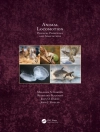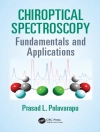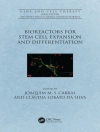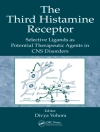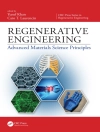Despite the critical importance of the cerebellum in brain function, the scientific community still lacks effective treatments for most cerebellar ataxias. This book provides a link between the pathogenesis and therapies of cerebellar ataxias while also providing a comprehensive assessment of the preclinical and clinical trials dedicated to cerebellar ataxias over the past 20 years of progress. This is the first book fully dedicated to the trials and therapies of these disorders. It is a truly authoritative and comprehensive reference, and comes at a time of major advances in genetic tools and neuroimaging assessments. The coverage begins by laying a foundation of the basic science of the cerebellum and ataxias, proceeds to discuss biomarkers and the tools of trials, offers guidelines on conducting trials, and then explores the full range of therapeutics and their trials, including gene therapy and cell transplantation. The authors are top experts on cerebellar research and the contributing authors have all made seminal contributions in the field.
Spis treści
Part I:
Basic Science of Cerebellum and Ataxias .-
Functional anatomy of the cerebellum.- Cerebellar physiology.- Cerebellar biochemistry/pharmacology.- Genetics of dominant ataxias.- Autosomal and X-linked degenerative ataxias: from genetics to promising therapeutics.- Seeking therapies for Spinocerebellar Ataxia: from gene silencing to systems-based approaches.- Ion Channel Genes and Ataxia.-
Part II: Biomarkers and tools of trials .- How to Design a Therapeutic Trial in SCAs.- Therapy development for spinocerebellar ataxia: Rating Scales and Biomarkers.- Clinical rating scales for ataxia.- Scale for Ocular motor Disorders in Ataxia (SODA): Procedures and Basic Understanding.- Cerebellar learning in the prism adaptation task.- Blood and CSF biomarkers in autosomal dominant cerebellar ataxias.-
Part III: Autosomal Dominant Cerebellar Ataxias .- Riluzole in progressive cerebellar ataxias.- ASOs against ATXN2 in preclinical and phase 1 trials.- Antisense oligonucleotide therapy against SCA3.- Spinocerebellar ataxia type 7: From mechanistic pathways to therapeutic opportunities.- Experimental neurotransplantation for cerebellar ataxias.- Development of mesenchymal stem cells therapy for the treatment of polyglutamine SCA: from bench to bedside.- Cerebello-Spinal t DCS as Rehabilitative Intervention in Neurodegenerative Ataxia.- Cerebellar Transcranial Magnetic Stimulation in Cerebellar Ataxias.- Physical therapy in Cerebellar Ataxia.-
Part IV: Autosomal Recessive Cerebellar Ataxias .- Recent advances on therapeutic approaches for Friedreich’s Ataxia.- Therapeutic use of interferon gamma in Friedreich ataxia.- Metabolic treatments of cerebellar ataxia.- Clinical Trials in Fragile X-Associated Tremor/Ataxia Syndrome.-
Part V: Sporadic Ataxias .- Therapeutic strategies inimmune-mediated cerebellar ataxias.- Coenzyme Q10 in MSA.- State of the Art and History of Therapeutics in Ataxias.
O autorze
Bing-wen Soong, MD, Ph.D. is Professor in Neurology and Genetics (board-certified neurologist and geneticist, certified clinical trial investigator), Taipei Medical University and National Yang Ming Chiao Tung University Faculty of Medicine, Taipei, Taiwan (Republic of China)
Mario Manto, MD, Ph D, is the Head of the Department of Neurology at CHU-Charleroi in Belgium. He is also a Professeur de Neuroanatomie et Sémiologie Neurologique, Service des Neurosciences, at UMons, Mons, Belgium.
Alexis Brice, MD, Ph.D., is the Executive Director at the Paris Brain Institute in the ICM, Hôpital de la Pitié-Salpêtrière, Sorbonne Université in France.
Stefan-M. Pulst, M.D., Dr. med, is a Professor and Chair in the Department of Neurology, at the University of Utah.


